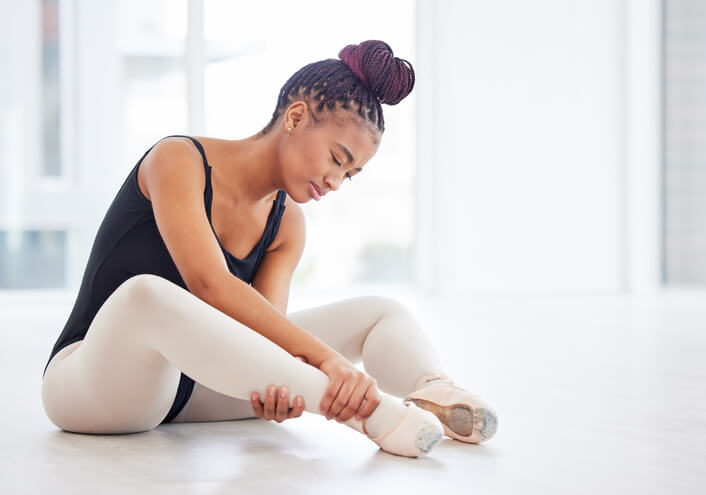Dancing is a sport as well as a form of artistic expression, and, like both of these activities, requires a combination of innate talent and intense practice. Like other athletes, dancers demonstrate amazing flexibility and grace but are also prone to injuries.
Whatever your dance form — ballet, modern dance, step dancing, tap dancing, folk dancing, jazz, hip-hop, etc. — if you pursue it with passion, at some point you are likely to experience some kind of dance injury. When you do, the dedicated physiatrists at Long Island Spine Rehabilitation Medicine are here to diagnose and treat your ailment and get you back on the dance floor as quickly as possible.
Dance Injuries Our Doctors Treat
Our doctors, who specialize in musculoskeletal pain management and restoration of function, are well-suited to the task of treating dance injuries stemming from overuse, falls, and sudden twists of limbs or pelvis. Though most dance injuries involve the leg, ankle, foot or lower back, hips and knees are frequently injured as well.
Foot and Ankle Dance Injuries include:
- Achilles tendonitis, an inflammation of the tendon in the back of the ankle
- Trigger toe, damage and inflammation to muscle that causes the big toe to point
- Ankle impingement, the pinching of tissues at either the front or the back of the ankle
- Ankle sprains (the most common traumatic injury in dancers), caused by movement that forces the ankle beyond its normal range of motion, overstretching or tearing a ligament
Hip Dance Injuries include:
- Snapping hip syndrome, when a snapping sensation accompanied by a popping sound occurs when the iliotibial (IT) band (a tendon) moves over one of the bony knobs of the hip, sometimes leading to painful bursitis
- Hip impingement occurs when the ball of the hip joint pinches up against the socket, damaging the cartilage that surrounds the latter part of the joint.
- Hip tendonitis, when the hip muscles are overused and pull on the tendons attached to one of the bones around the hip. When this occurs, the hip can become irritated and inflamed
- Hip bursitis, a painful swelling of the fluid-filled sacs that cushion the hip joint.
- Sacroiliac joint dysfunction, where the base of the spine (sacrum)
attaches to the hip bone (ilium)
Knee Dance Injuries include:
- Patellofemoral pain syndrome, when there is pain in the front of the knee and around the kneecap (patella), often brought on by running or jumping, that makes it difficult to climb stairs or kneel
- Patellar Tendonitis, strain and inflammation of the patellar tendon which, left untreated, can result in tendon degeneration or tear
Stress Fracture Dance Injuries are tiny cracks in a bone caused by repetitive stress, typically from overuse. In dancers, stress fractures usually occur in the metatarsals, the tibia, the sesamoids of the knee or big toe, and the facet joints of the lumbar spine.
When a Dance Injury Requires a Doctor’s Visit
Sometimes it is obvious that immediate medical care is needed, for instance, if you fall and are unable to put weight on one leg. Nonetheless, many dance injuries are harder to call since serious dancers, like other athletes, are used to dealing with a certain amount of soreness in the aftermath of a strong workout.
Following are some rules of the road to distinguish between more and less serious dance injuries. Dance injuries that necessitate calling our offices for an appointment will generally cause pain that:
- Lasts more than 24 to 48 hours
- Is severe enough to prevent sleep or to awaken you
- Is immediately apparent when you start an activity
- Makes you shift your weight or take other measures
to avoid putting pressure on the painful area
Contact Our Experienced Dance Injury Doctors to Get Back in Step
Getting in touch with our physiatrists as soon as you realize the need for accurate diagnosis and correct treatment is important because early intervention can mean a much faster recovery from your dance injury.
Our practice is nonsurgical and holistic and we offer a broad range of treatment options, including traditional methods like physical therapy and corticosteroid injections and complementary methods, such as acupuncture and pulsed electromagnetic field (PEMF) therapy. Contact us today to get back in motion.
